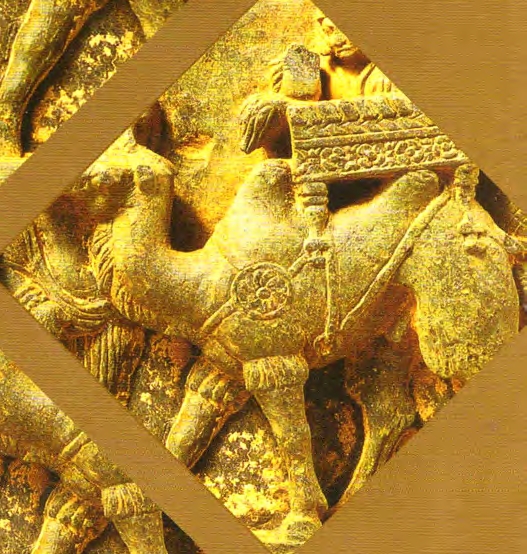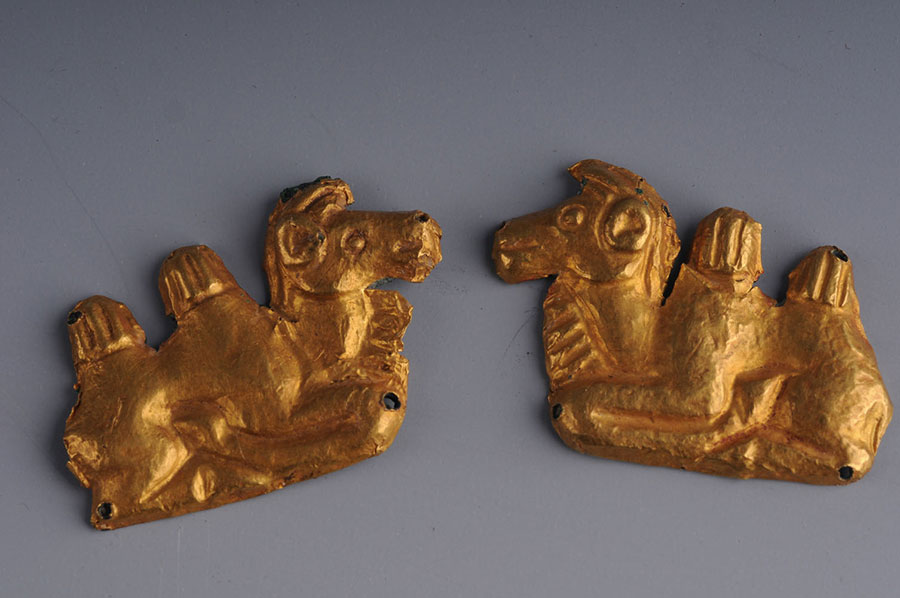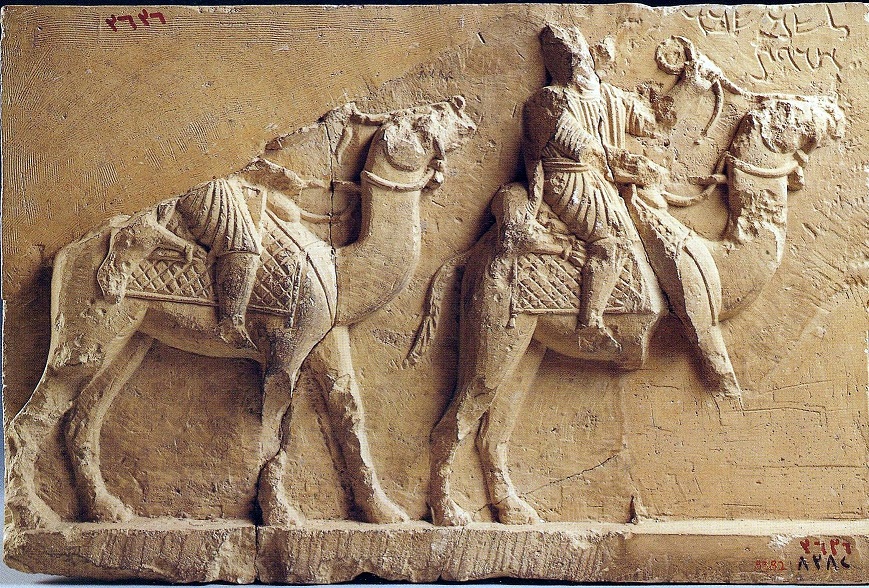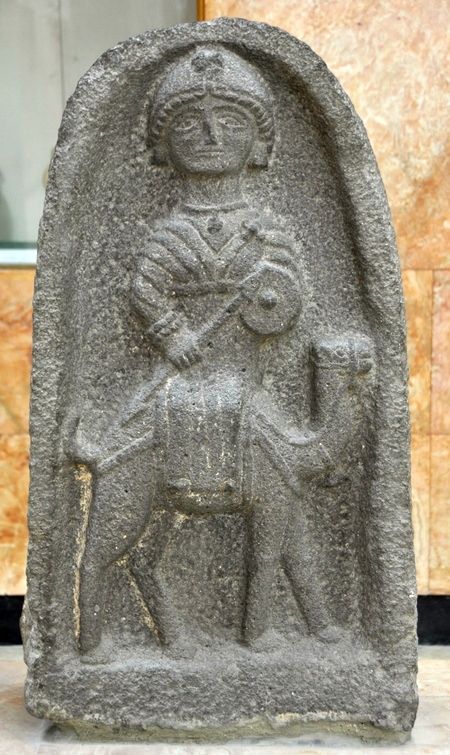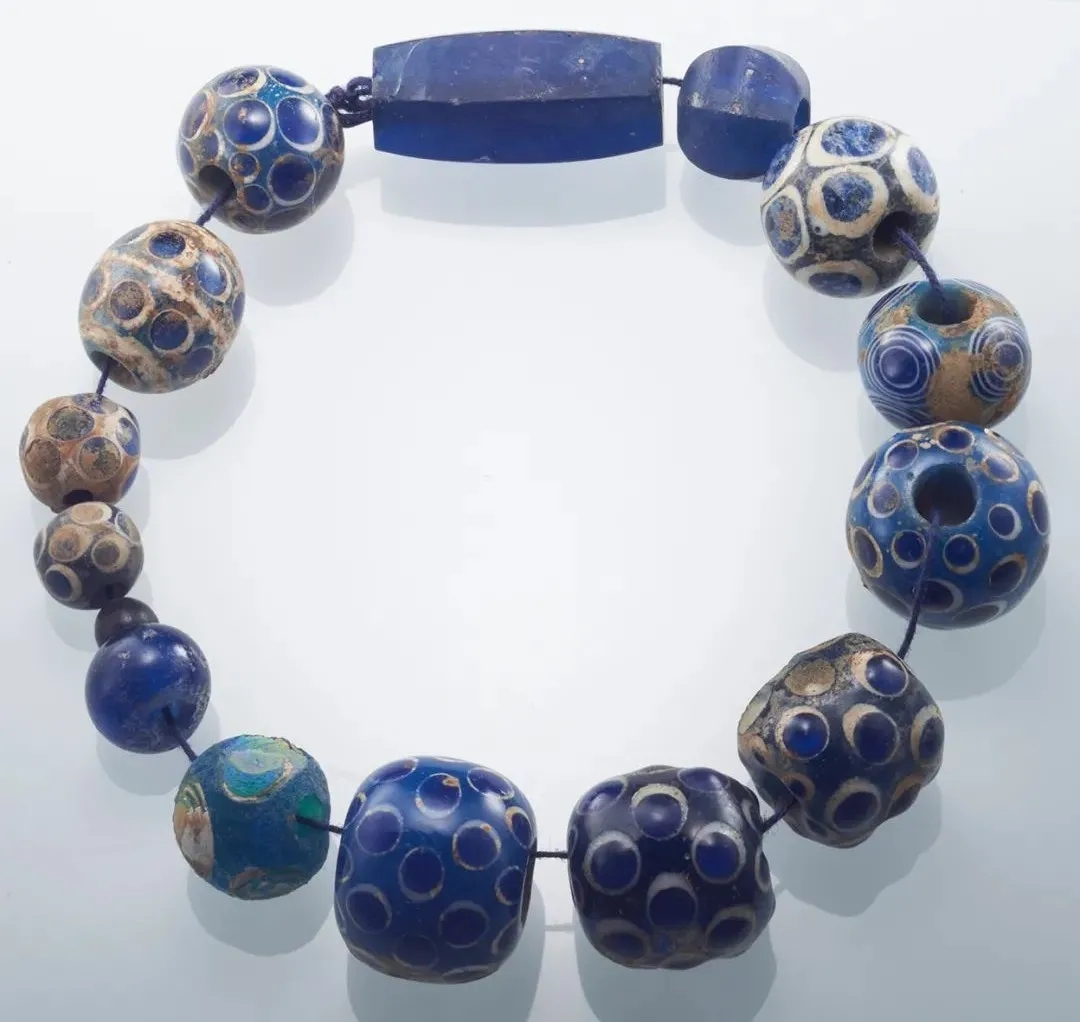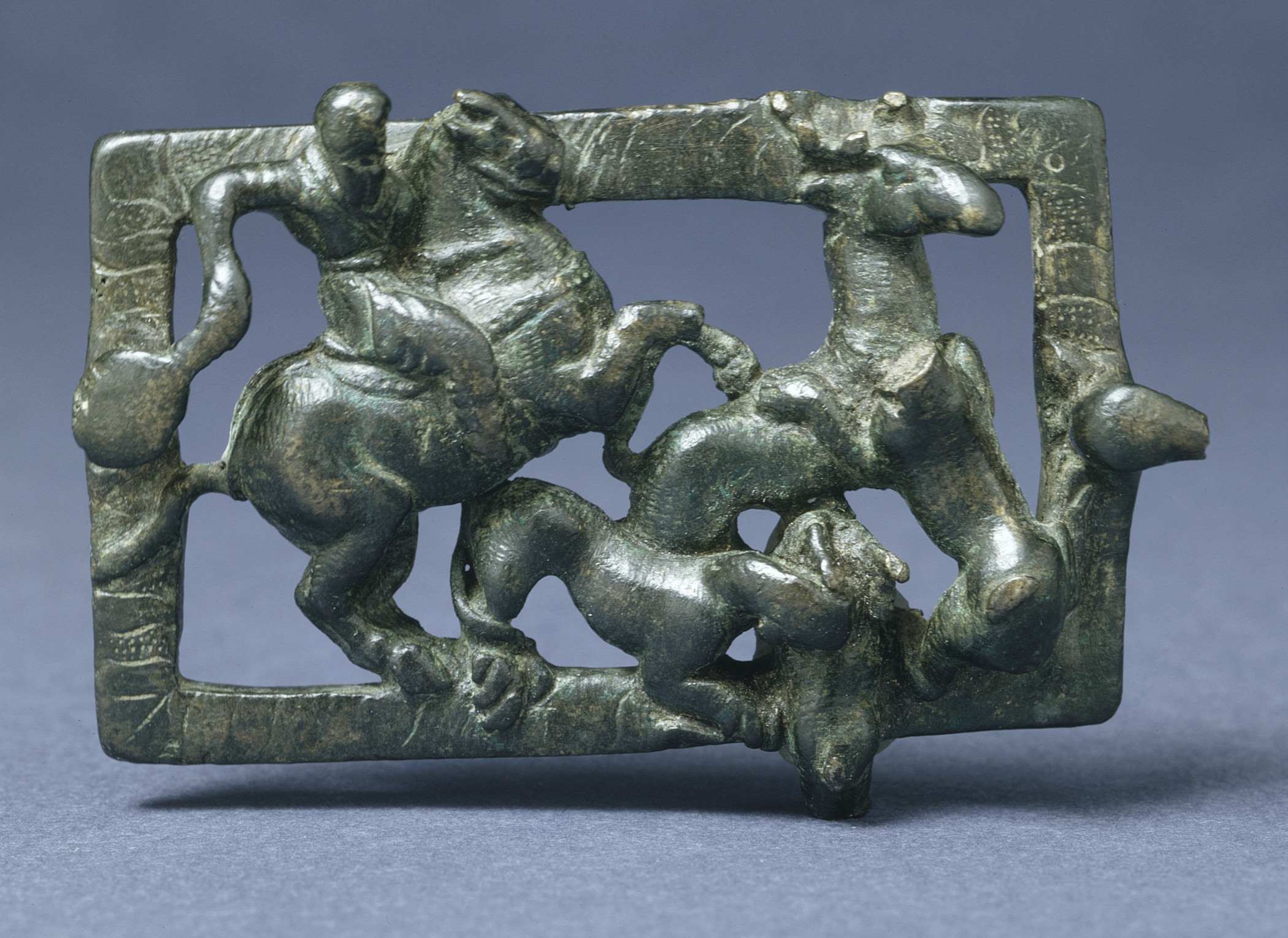Gold plaques in the shape of a Bactrian camel.
Height 2.2 cm, length 2.8 cm, weight 1.5 g
Excavated in 1994, from Tomb I, Goubei, the Ancient City of Jiaohe, Turpan Xinjiang Institute of Archaeology.
Collection of Xinjiang Uygur Autonomous Region Museum, China
“two camel gold ornaments from the Han period hidden in the Xinjiang Museum. They were unearthed in 1994 at the No. 1 platform north of Guchenggou, Jiaohe, Turpan. Two golden camels were lying on their knees, their humps soaring, as if they would stand up and go to the Silk Road if anyone sat on them.” [source http://www.cunman.com]
“The gold ornament is in the shape of a Bactrian camel lying with its legs on top of each other, with erect ears, long crotch, and straight eyes, with a contented expression. There are fastening holes on the nose, peak, knees and tail. There is a custom of burying horses or camels in Jiaohegou North Cemetery. After the camels are killed, crickets are placed in the burial pits. Camels represent wealth. The more camels they own, the richer they will be.”
[source: 天山·古道·东西风:新疆丝绸之路文物特辑
Mountain Tianshan. Ancient Roads. The Meeting of East and West: The Extraordinary Cultural Relics from the Silk Road in Xinjiang, 中国社会科学出版社, 2002]




